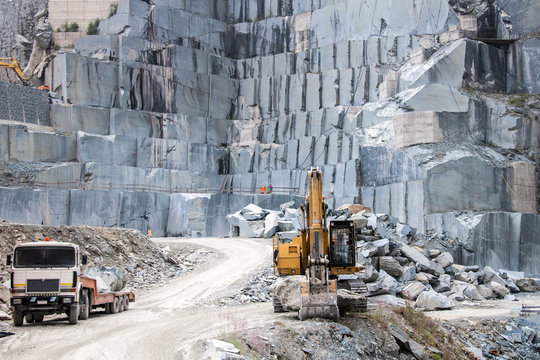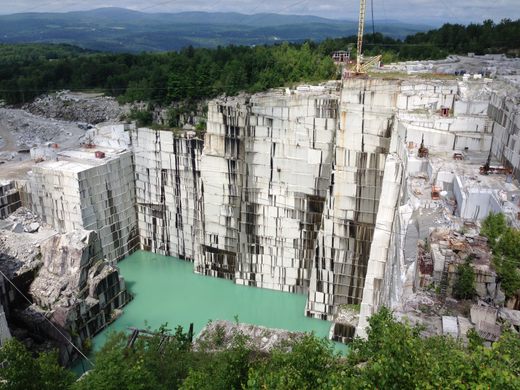Granite Quarries in Rustenburg: Unveiling Quarries of Natural Elegance
Wiki Article
Introducing the Mysteries: Inside the Operations of Granite Quarries
Today, we get started on a voyage of exploration, peeling off back the layers of secrecy that border the procedures of granite quarries. Prepare to be amazed as we delve into the geological marvels, uncover the complex methods used in quarrying, and witness the precision and artistry included in transforming raw granite obstructs right into architectural masterpieces.The Development of Granite: A Geological Marvel
Granite, an awe-inspiring geological wonder, is formed via an intricate process that covers numerous years. This igneous rock comes from deep within the Earth's crust, where extreme warmth and stress trigger the melting and recrystallization of existing rocks. The development of granite begins with the cooling of magma, the liquified rock that exists under the Planet's surface area. As the magma cools down, it solidifies into igneous rocks, which can later be subjected with the erosion of overlying layers.The distinct structure of granite is a result of its slow-moving air conditioning procedure. This slow-moving air conditioning enables the minerals within the lava to grow and crystallize, creating a grainy appearance that specifies granite's particular appearance. The most abundant minerals located in granite are mica, quartz, and feldspar, which contribute to its firmness, durability, and distinctive polychromatic patterns.
Over countless years, the activity of tectonic plates and the forces of disintegration progressively bring granite to the Earth's surface area. As soon as exposed, granite can be quarried and changed right into different building and attractive attributes, such as countertops, flooring, and monoliths.

Quarrying Techniques: From Explosives to Diamond Wire Sawing
Quarrying methods have actually advanced over time, transitioning from the use of explosives to the implementation of diamond cord sawing. Typically, nitroglycerins were used to loosen up and break apart the granite from its natural bedrock. This procedure entailed exploration openings right into the cliff, placing dynamites, and after that detonating them to develop fractures. While reliable, this approach had a number of disadvantages, including security worries, ecological effect, and the unforeseeable nature of the fractures.In recent years, the introduction of ruby cord sawing has actually changed the quarrying sector. This technique involves making use of a diamond-coated wire to reduce through the granite. It is a safer and much more eco pleasant technique, as it does not include the use of nitroglycerins or produce extreme sound, dust, or resonances.
The application of ruby cord sawing has actually additionally enhanced performance in granite quarries. It allows for faster cutting and extraction, reducing downtime and enhancing the total effectiveness of the procedure. This method makes it possible for quarry operators to remove bigger blocks of granite, which can be utilized for various objectives, consisting of construction, sculpture, and indoor layout. granite quarries in rustenburg.
Extraction and Block Reducing: Introducing the Art of Accuracy
The procedure of extraction and block cutting in granite quarries showcases the thorough artistry required to attain accuracy in the production of granite materials. This stage of the quarrying procedure involves the careful elimination of large granite blocks from the earth and the succeeding cutting of these blocks right into smaller sized, much more convenient dimensions.To draw out the granite blocks, quarry employees employ a combination of heavy machinery, such as loaders and excavators, in addition to skilled manual work. The granite blocks are thoroughly removed from the bordering rock utilizing specialized tools and strategies. This process requires precision and experience to make certain the blocks are drawn out without damages or breakage.
When the blocks are extracted, they are transported to a cutting center where they undergo further handling. Block cutting is a fragile and complex procedure that needs precision cutting tools and equipment - granite quarries in rustenburg. Skilled artisans make use of diamond-tipped saws to very carefully slice the blocks right into pieces of the preferred density. This action requires careful interest to information to ensure the pieces are reduced uniformly and accurately.
The art of precision in extraction and block cutting is crucial in the manufacturing of granite products. The resulting slabs are utilized in a range of applications, including countertops, flooring, and building facades. The careful interest to detail and precision in these processes guarantees that the final products fulfill the highest requirements of quality and longevity.
Transport and Logistics: Moving Hills of Stone
The transportation and logistics associated with moving mountains of stone from the quarry site to their marked areas require cautious preparation and coordination. Once the granite blocks are extracted and reduced, the next critical step is to transfer them successfully and securely (granite quarries in rustenburg). This procedure includes various components, including transport modes, tools, and routesTransport settings play an essential function in the movement of granite blocks. Trucks are typically made use of for short-distance transport due to their adaptability and access.
Equipment such as cranes and forklifts are made use of to load and discharge the granite obstructs onto the transportation automobiles. These devices guarantee the risk-free handling of the heavy rock, reducing the risk of damages during transportation.

Polishing and Finishing: Changing Granite Into Architectural Masterpieces
To transform granite into architectural work of arts, the process of polishing and finishing is diligently implemented with precision and workmanship. As soon as the granite blocks are extracted from the quarry and carried to the handling center, they go through numerous phases of completing and brightening to enhance their aesthetic appeal and durability.The very first step in the polishing procedure is to get rid of browse around this web-site any type of harsh edges and blemishes from the surface area of the granite. This is done making use of specialized equipment that uses rough pads or ruby tools. The granite is then carefully polished using progressively finer grits to achieve a glossy and smooth finish.
After polishing, the granite goes through a process called developing. This involves using rough pads or brushes to produce a matte or satin finish, relying on the desired appearance. Sharpening additionally helps to further boost the natural color and pattern of the granite.
When the preferred surface is accomplished, the granite is extensively cleansed and evaluated for any type of remaining flaws. It is after that treated with a sealer to safeguard it from discolorations, moisture, and other ecological factors. This sealant additionally helps to enhance the shine and long life of the granite.
The last step in the sprucing up and finishing procedure is quality assurance. Each slab of granite is carefully evaluated look at here now to make certain that it meets the highest possible standards of high quality and workmanship. Any type of problems or inconsistencies are addressed before the granite prepares to be changed into architectural masterpieces.
Final Thought
To conclude, the operations of granite quarries involve a complex procedure that showcases the wonder of geological development, using sophisticated quarrying techniques, and the accuracy in removal and block cutting. Furthermore, transportation and logistics play a vital duty in content relocating the substantial amounts of rock, while brightening and ending up strategies transform granite into building masterpieces. The world of granite quarries reveals a remarkable mix of skill, virtuosity, and scientific research.Prepare to be surprised as we delve into the geological wonders, discover the complex techniques employed in quarrying, and witness the accuracy and artistry involved in transforming raw granite blocks into building masterpieces.To draw out the granite blocks, quarry employees utilize a combination of hefty machinery, such as excavators and loaders, along with proficient manual labor. The granite blocks are carefully separated from the bordering rock making use of specialized tools and strategies.The art of accuracy in extraction and block cutting is vital in the manufacturing of granite materials.In final thought, the procedures of granite quarries include a complex process that showcases the marvel of geological development, the usage of sophisticated quarrying methods, and the precision in extraction and block cutting.
Report this wiki page